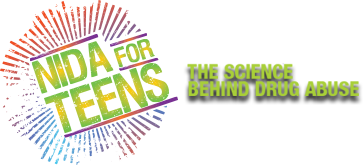
I remember my sophomore year in high school, feeling a life-changing moment of excitement when I read Dr. Karl Diesseroth’s work on optogenetics, a new field that involves studying the brain with light. I could never have imagined it would mark the beginning of a journey that would lead to presenting my research to NIDA Director Dr. Nora Volkow and her colleagues just 2 years later.
Along my journey, I was fortunate to have wonderful mentors from Yale University who truly cared about my interests. Professors Amy Arnsten and Ralph DiLeone are brilliant leaders in neuroscience research, yet they still found time to generously mentor. I performed optogenetics research in Dr. DiLeone’s laboratory, working closely with postdoctoral fellow Dr. Benjamin Land, who is a great, generous mentor.
Shedding Light on Connections Between Brain and Behavior
With optogenetics, light-sensitive chemicals (first discovered in algae) are inserted into the DNA of specific cells, giving us the ability to control those cells. In the project I worked on, we used this method to modify particular neurons in the prefrontal cortex of genetically altered mice. The prefrontal cortex is a region involved in regulating behavior and self-control.
We delivered blue laser light via fiber optics to the animals’ prefrontal cortex to control the timing of their behavior. This approach suggested a whole new way the brain could be repaired effectively, using light to target specific areas causing the trouble—instead of using medications that could affect the whole brain. By pairing genetics with light, optogenetics allows us to design new ways to repair the brain in people with brain disorders.
Undertaking such research felt especially compelling to me because of my desire to help people with difficulties stemming from disorders affecting their prefrontal cortex. Millions of individuals suffer from such disorders, which include drug addictions, schizophrenia, depression, Alzheimer’s disease, and Parkinson’s disease. These conditions might be better managed or even cured in the future with new treatments growing out of optogenetic research.
Sharing My Research and My Passion
As a result of these experiences, I’ve presented my research many times to different audiences. I have talked to students from elementary through high school, participated in Connecticut state science competitions, presented at a regional competition at the Massachusetts Institute of Technology and then at the George Washington University as a national finalist in the Siemens Competition in Math, Science, and Engineering, at the American Academy of Neurology, and finally at the Intel International Science and Engineering Fair, where I received the NIDA Addiction Science Fair Award. Presenting to Dr. Volkow and her colleagues proved to be one of the greatest opportunities. I loved responding to their rapid-fire questions after giving my presentation. I also had the chance to tour the National Institutes of Health campus and Intramural Research Program laboratories.
Winning this award offered me a window to seeing the best translational research in action—applying what we learn from basic research to develop treatments and then try them out in clinical trials. It seems there are no limits to the questions that could be imagined and tested and the scientific inquiry that could be accomplished on the road ahead.
John Solder is currently a freshman at Yale University. The optogenetics project he worked on is part of a manuscript he co-authored, to be published in the Proceedings of the National Academy of Sciences (PNAS). He will be continuing research in this area.





Add new comment